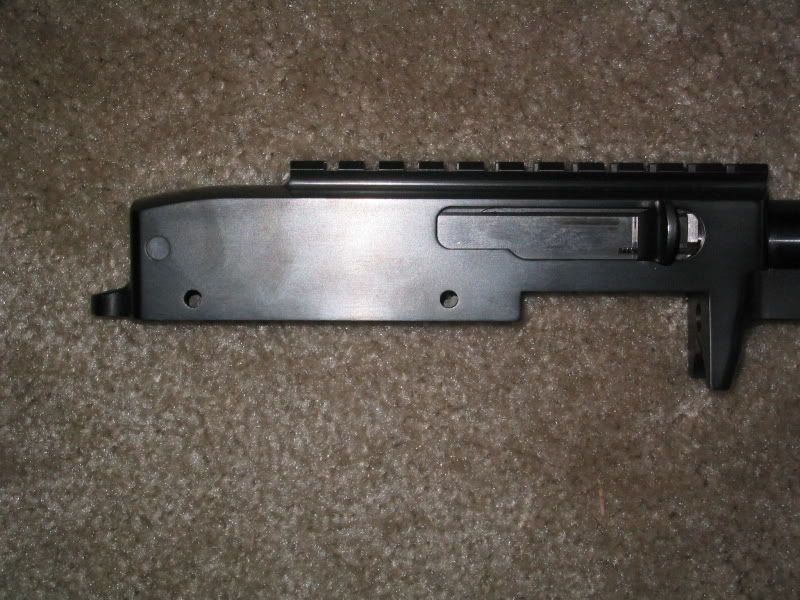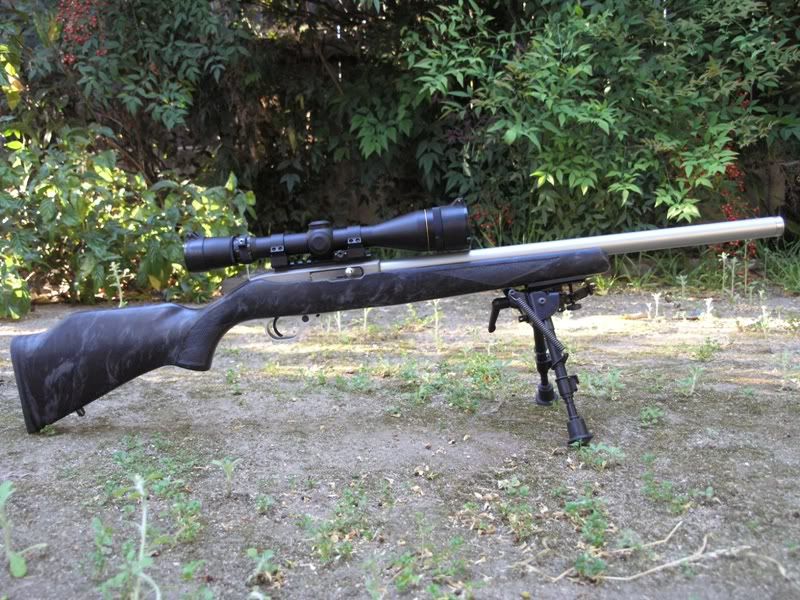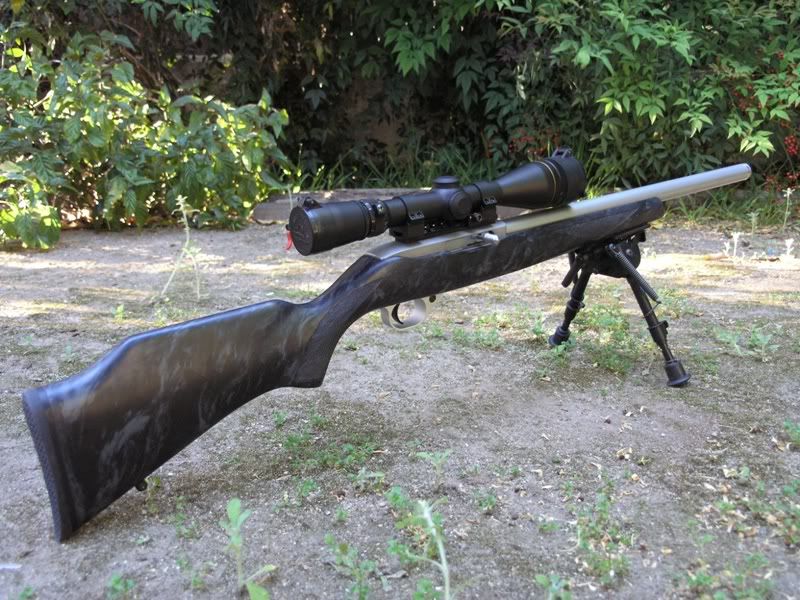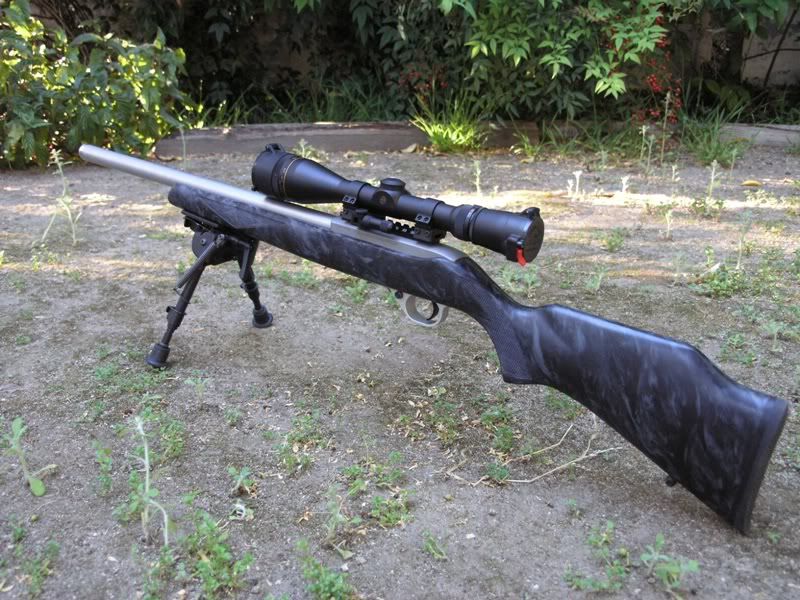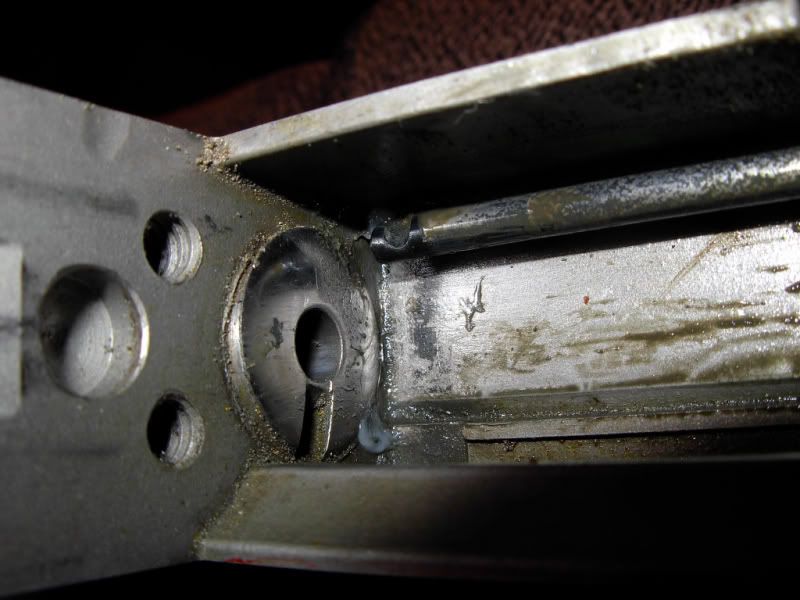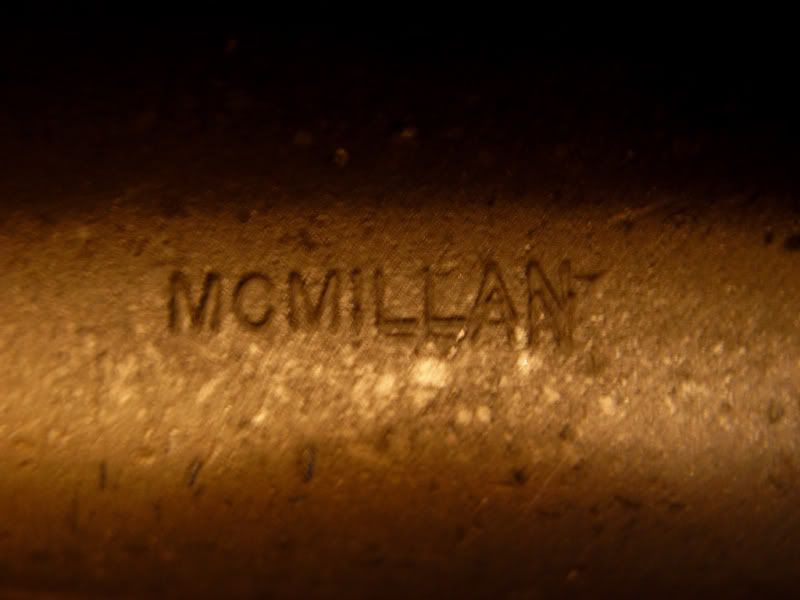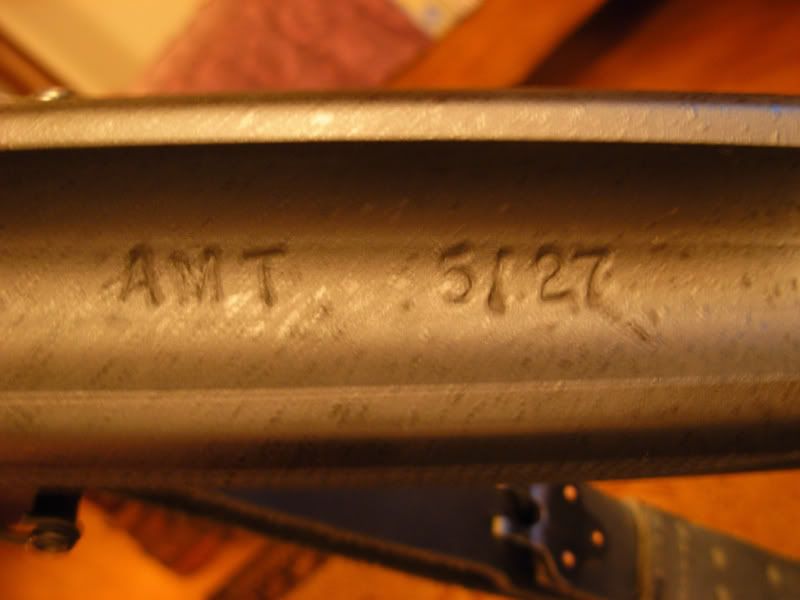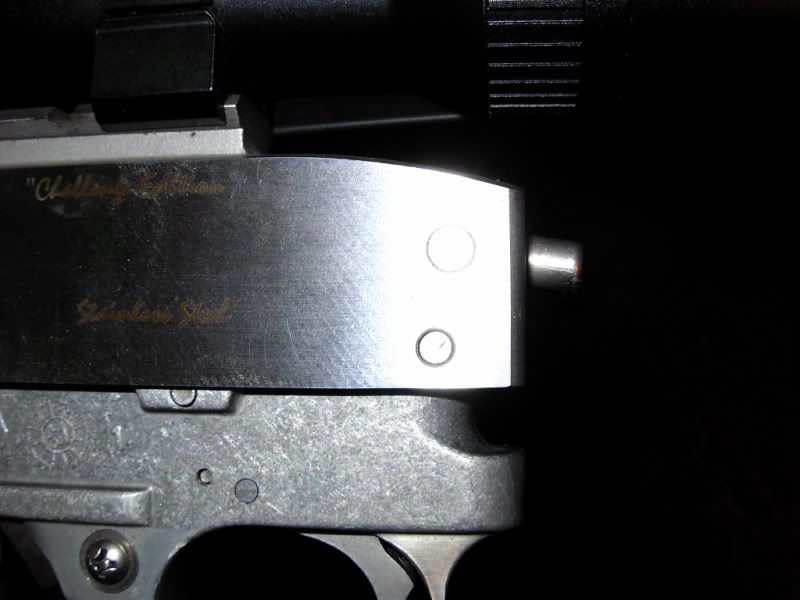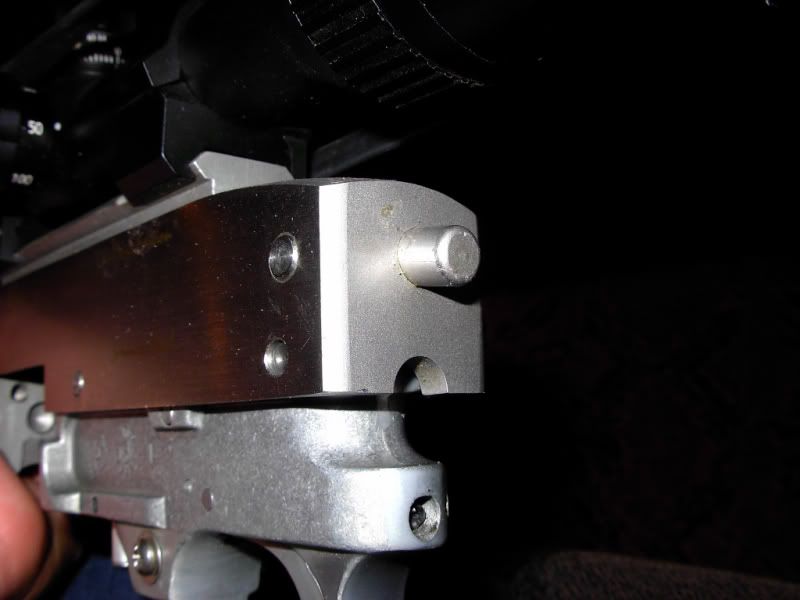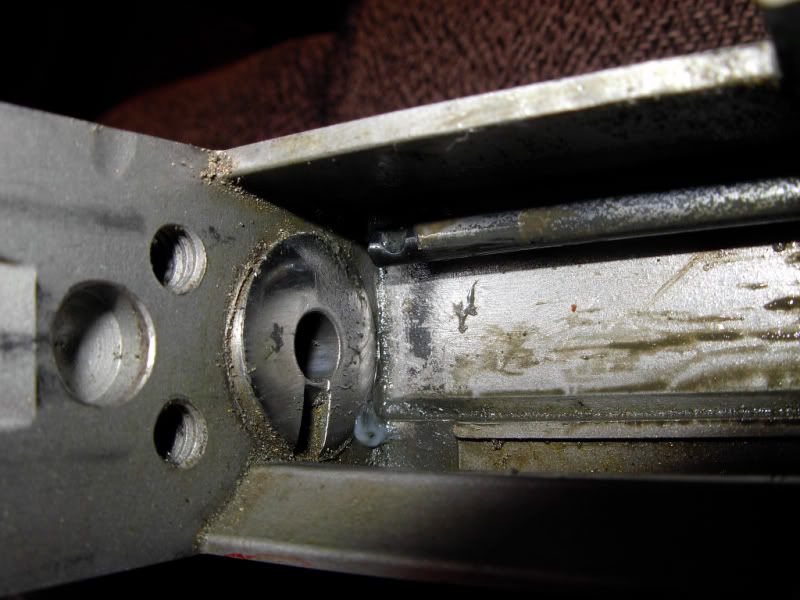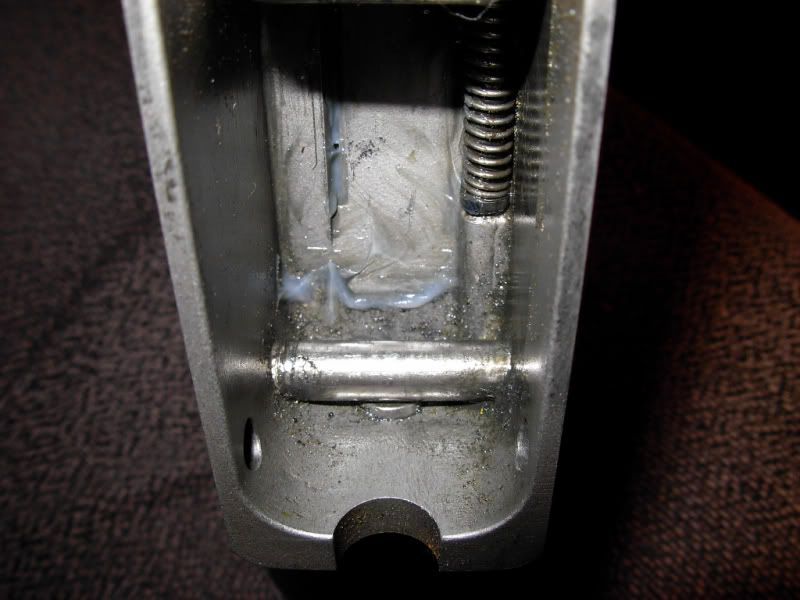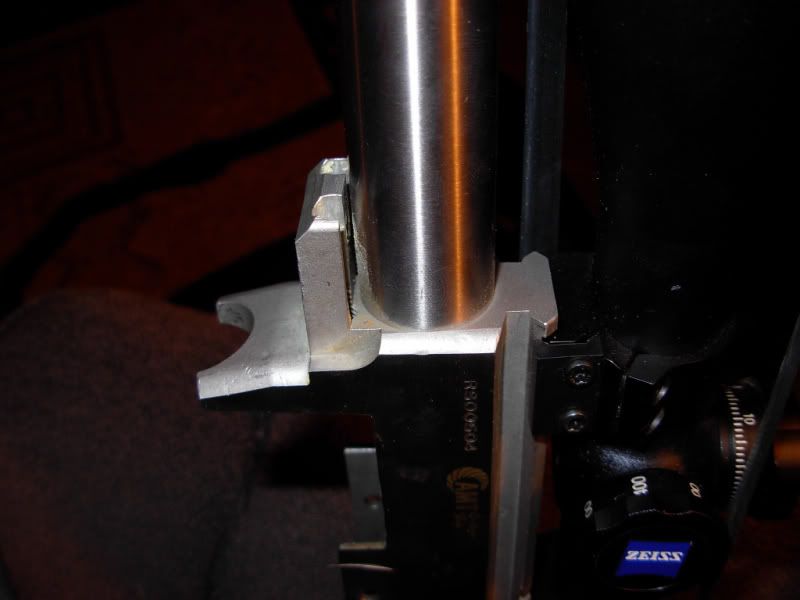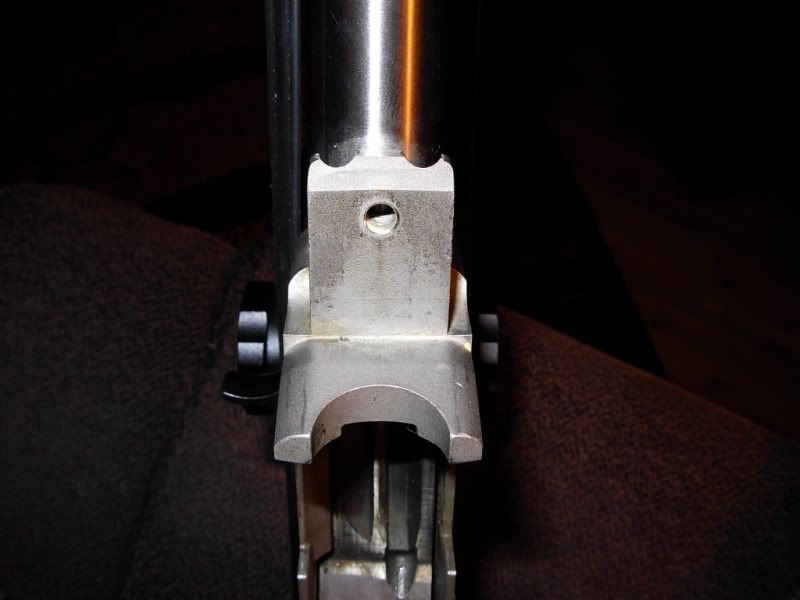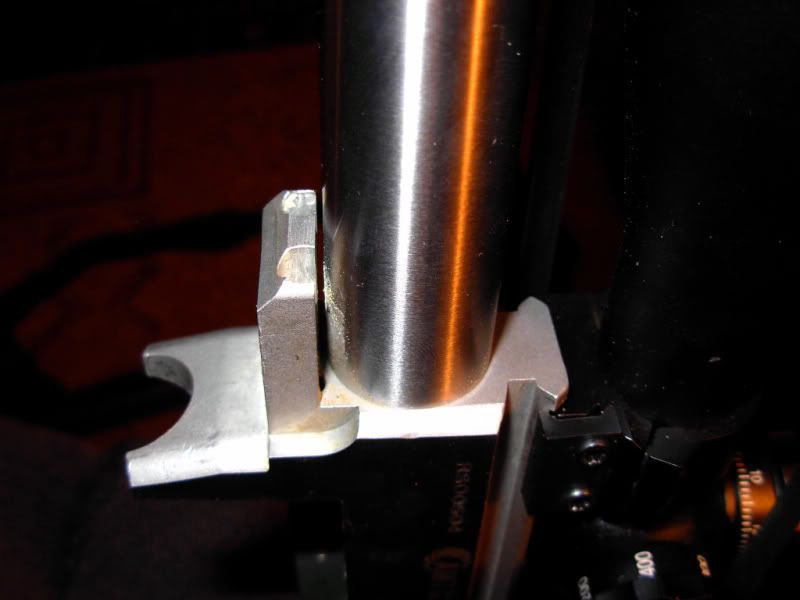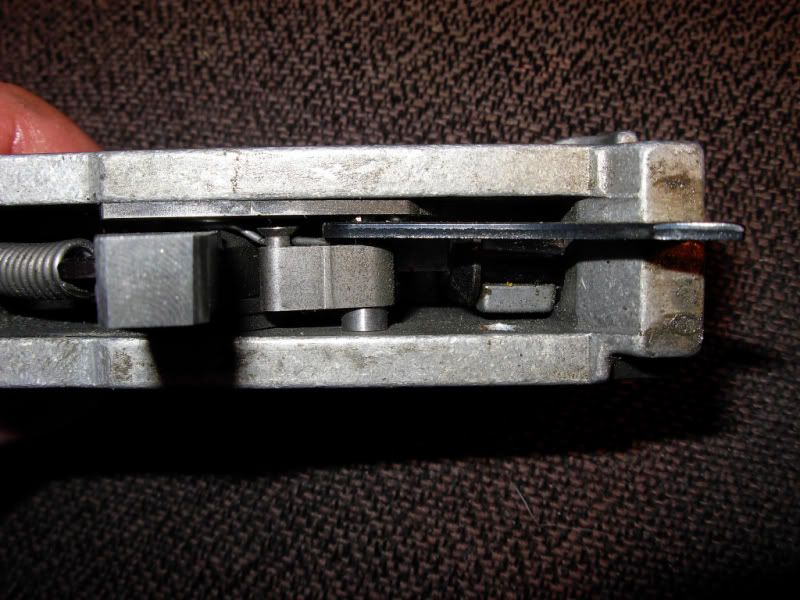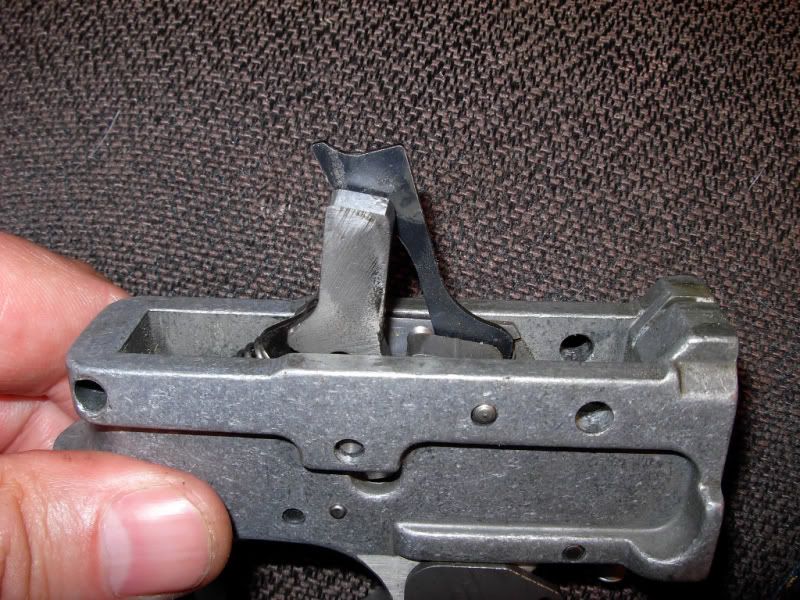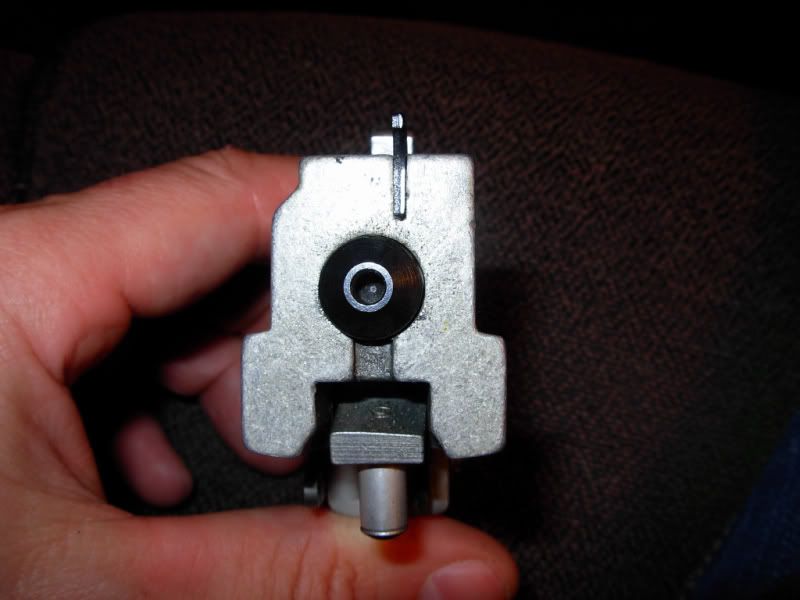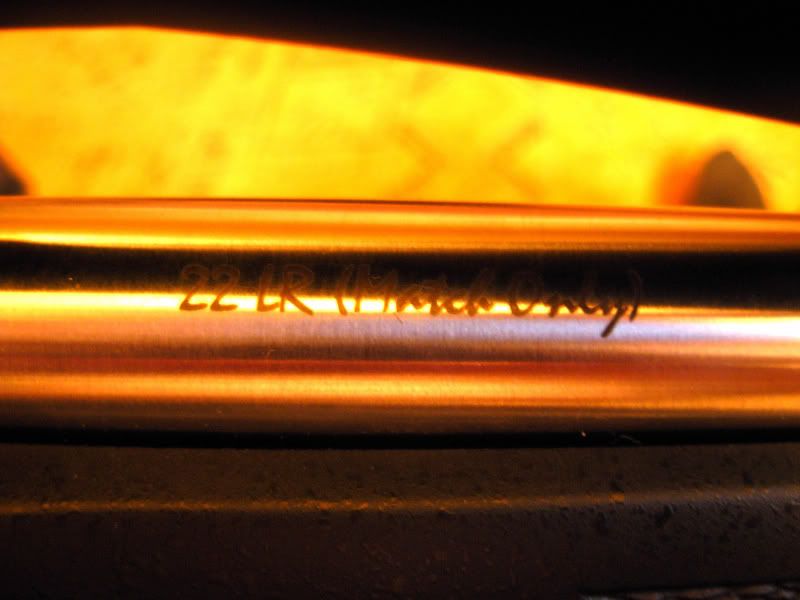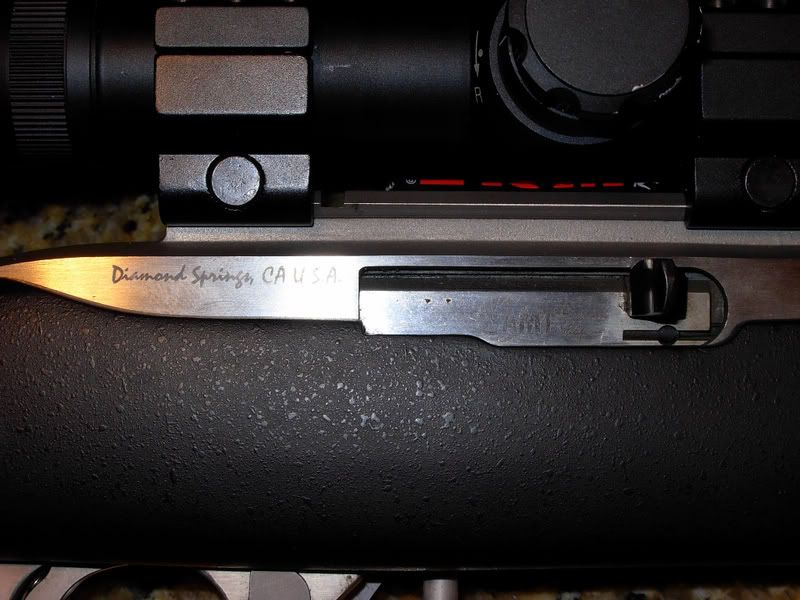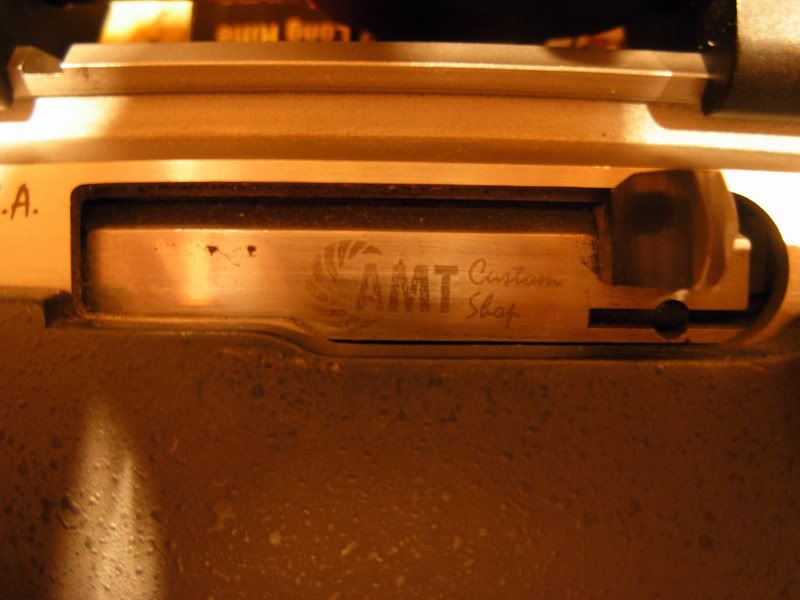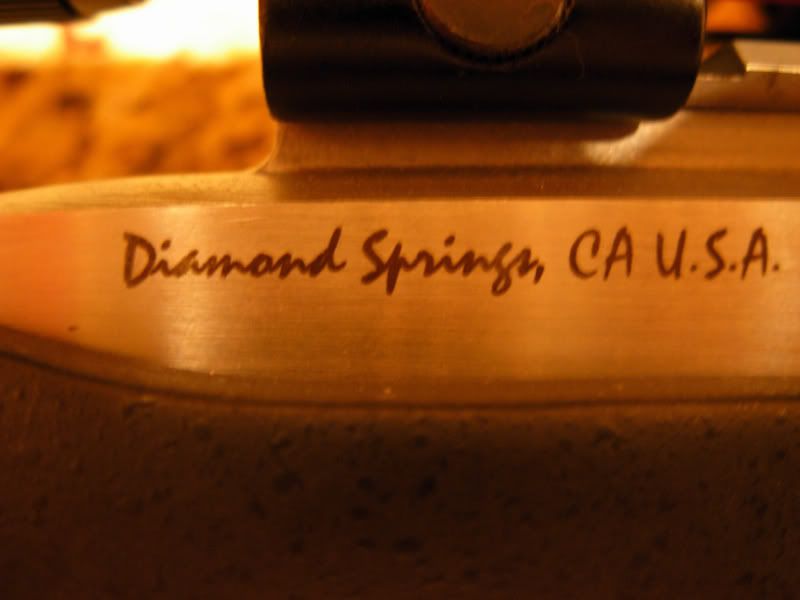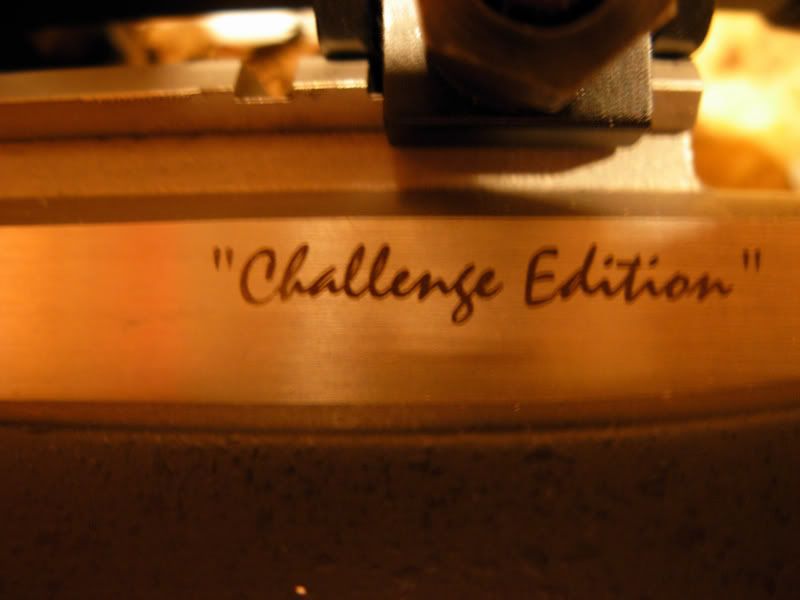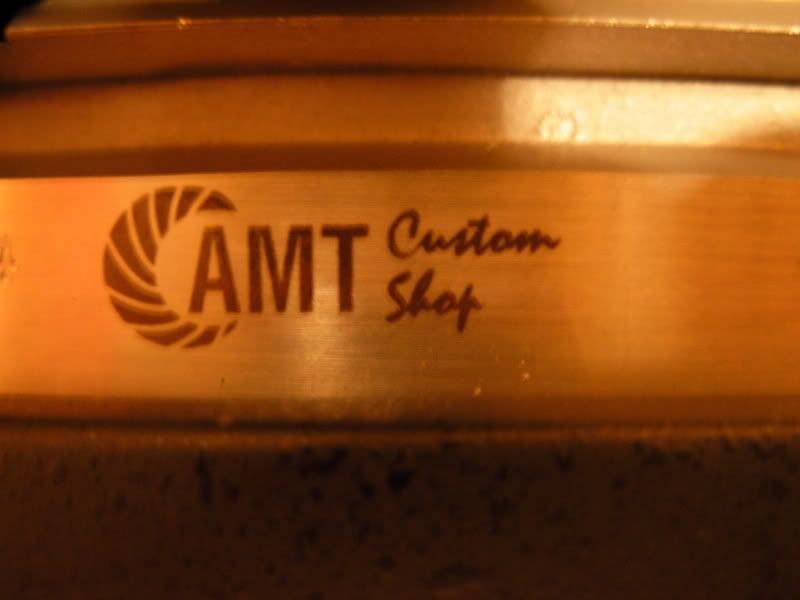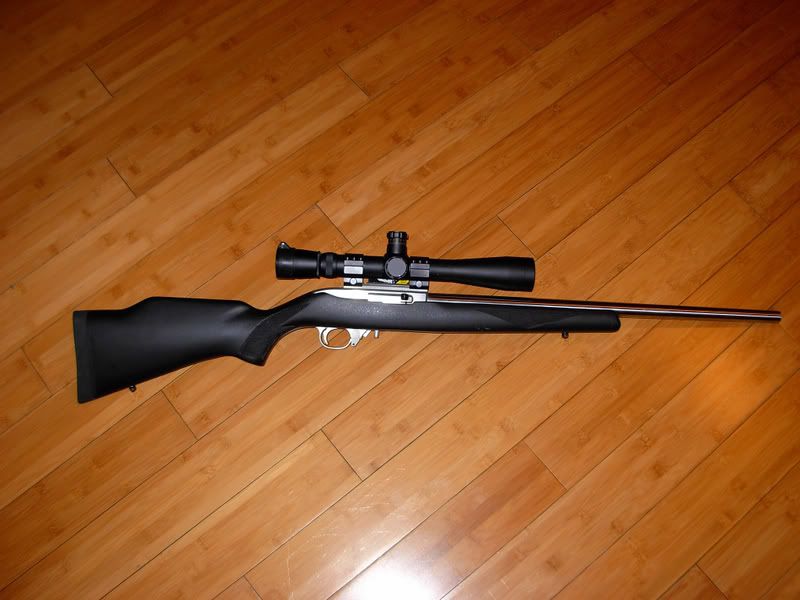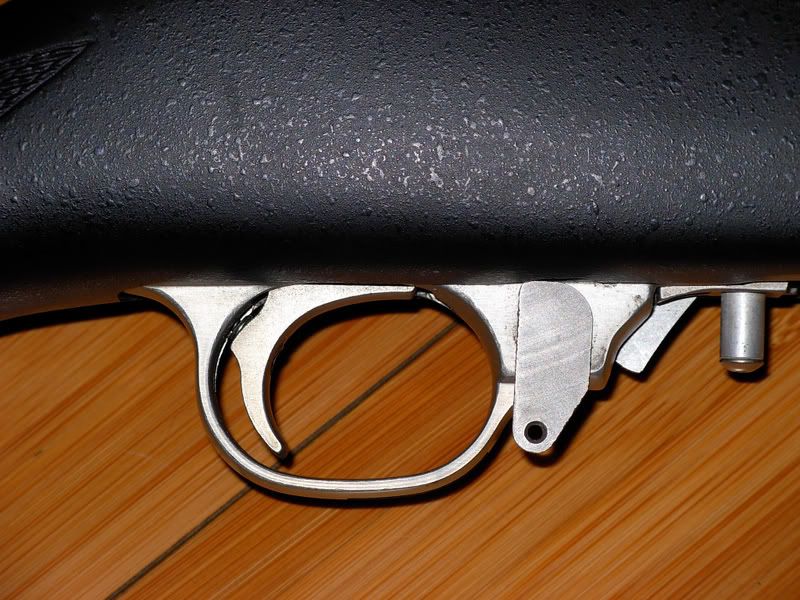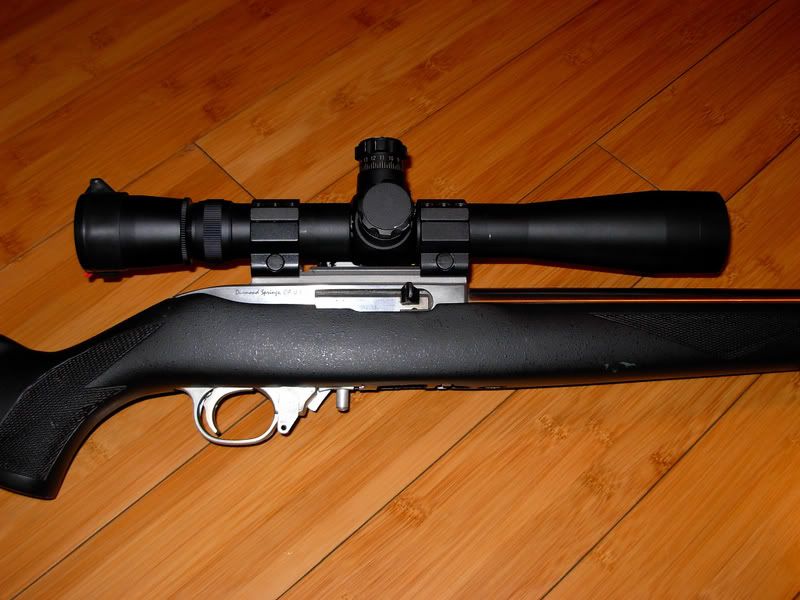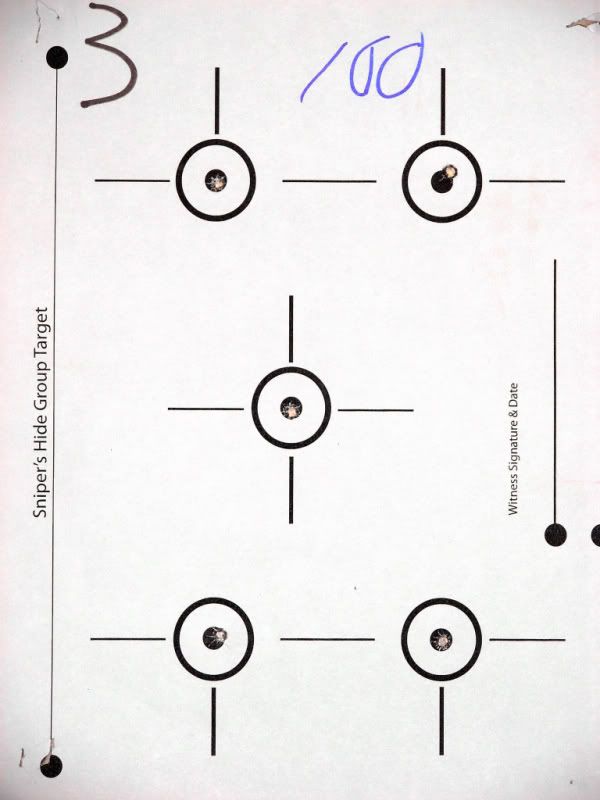Just a bit about how I set up a 10/22 for longrange, up to 500 for fun and practice.
A bit about my rifle first, its nothing fancy, just a plain old 10/22 action about 15 years old, that about 5 years ago I put a Green Mountain stainless barrel on and a hogue overmolded stock, like I said nothing fancy.
I did notice on several occasions that the rifle with this barrel shot very well, less than 1/2 inch at 50 yards and less than 1.5 at 100 with good ammo.
I have several remington heavy barrel rifles set up for longrange shooting (3) and always wanted a rimfire with the ability to click up for longer range shooting.
So I began a search to replace the leupold 3x9 vari x II that I had on the rifle with something more suitable for long range. After selling off this scope and 2 others that I was not using at the time I settled on a Leupold 4.5x14 with the 30mm tube and side focus, the reason I picked this scope is because it has 125 minutes of adjustment, you need a lot to go long with a 22. So back it went to Leupold to have target turret adjustments installed. Soon it was back and ready to go.
From midway I got a egw 20 minute base and burris signature zee rings with the polymer offset inserts.
I put it all together with the offset inserts in the rings, this gave me 20 in the base and 10 under the back ring and 10 on top of the front ring for a total of 40 minutes of up in my mounts.
Here is where I encountered my first problem, I did not consider the barrel droop inherrent in the design of the 10/22. When I shot it, it was very close to being dead on at 50 yards with my scope adjustment being in or very near to the middle of the available travel, so after a calculated swag (scientific wild ***** guess) I added a 1/16 aluminum shim under the back of the egw base.
This shim measured .060 thick or another 60 minutes worth of included angle, thus overcoming the barrel droop.
When I zeroed it now at 50 yards I am left with nearly 120 minutes of up in my scope.
I carried it to my friends range which has metal targets to 1000 yards to give it a good testing.
It was too windy to really see what it could do but I was able to shoot it to 400 yards. Can you say wind sensitive!!!!! a gnat fart at that range would move the bullet a foot or more. I still have enough elevation to go another 100 yards or to 500. But ran out of light before geting to 500.
I would never consider shooting small game beyond the range the rimfire is gun enough for good kills, 50 yards or so, but for having fun, shooting long is fun and affordable.
A rough guess as to group size at the longer ranges would be as follows, this is not what the gun is capable of, but what I saw on that range day.
100-2"
200-5"
300-10"
400-20"
I know the gun is capable of better and I intend to see just what it will do over the coming months now if I can just sell my 1.5x5 leupold and get me a kidd trigger I think I will see it really come alive.
( At this time I think velocity variations may be the biggest cause of group size, the wind was a challenge, but when I would get a steady wind my group size horizontal would be half as big as the verticle, since I'm shooting from sandbagged rests and hold is not a very limiting factor it must be velocity variations, I have plans to spend some time in front of my chrono to see what kind of spreads my lot of ww dyna points is giving me.)
Just my 2cents on one version of a longrange 10/22, warm barrels and tight groups: JS aka 308
--------------------------------------------------------------------------------
Last edited by 308 : Today at 10:58 AM.
A bit about my rifle first, its nothing fancy, just a plain old 10/22 action about 15 years old, that about 5 years ago I put a Green Mountain stainless barrel on and a hogue overmolded stock, like I said nothing fancy.
I did notice on several occasions that the rifle with this barrel shot very well, less than 1/2 inch at 50 yards and less than 1.5 at 100 with good ammo.
I have several remington heavy barrel rifles set up for longrange shooting (3) and always wanted a rimfire with the ability to click up for longer range shooting.
So I began a search to replace the leupold 3x9 vari x II that I had on the rifle with something more suitable for long range. After selling off this scope and 2 others that I was not using at the time I settled on a Leupold 4.5x14 with the 30mm tube and side focus, the reason I picked this scope is because it has 125 minutes of adjustment, you need a lot to go long with a 22. So back it went to Leupold to have target turret adjustments installed. Soon it was back and ready to go.
From midway I got a egw 20 minute base and burris signature zee rings with the polymer offset inserts.
I put it all together with the offset inserts in the rings, this gave me 20 in the base and 10 under the back ring and 10 on top of the front ring for a total of 40 minutes of up in my mounts.
Here is where I encountered my first problem, I did not consider the barrel droop inherrent in the design of the 10/22. When I shot it, it was very close to being dead on at 50 yards with my scope adjustment being in or very near to the middle of the available travel, so after a calculated swag (scientific wild ***** guess) I added a 1/16 aluminum shim under the back of the egw base.
This shim measured .060 thick or another 60 minutes worth of included angle, thus overcoming the barrel droop.
When I zeroed it now at 50 yards I am left with nearly 120 minutes of up in my scope.
I carried it to my friends range which has metal targets to 1000 yards to give it a good testing.
It was too windy to really see what it could do but I was able to shoot it to 400 yards. Can you say wind sensitive!!!!! a gnat fart at that range would move the bullet a foot or more. I still have enough elevation to go another 100 yards or to 500. But ran out of light before geting to 500.
I would never consider shooting small game beyond the range the rimfire is gun enough for good kills, 50 yards or so, but for having fun, shooting long is fun and affordable.
A rough guess as to group size at the longer ranges would be as follows, this is not what the gun is capable of, but what I saw on that range day.
100-2"
200-5"
300-10"
400-20"
I know the gun is capable of better and I intend to see just what it will do over the coming months now if I can just sell my 1.5x5 leupold and get me a kidd trigger I think I will see it really come alive.
( At this time I think velocity variations may be the biggest cause of group size, the wind was a challenge, but when I would get a steady wind my group size horizontal would be half as big as the verticle, since I'm shooting from sandbagged rests and hold is not a very limiting factor it must be velocity variations, I have plans to spend some time in front of my chrono to see what kind of spreads my lot of ww dyna points is giving me.)
Just my 2cents on one version of a longrange 10/22, warm barrels and tight groups: JS aka 308
--------------------------------------------------------------------------------
Last edited by 308 : Today at 10:58 AM.

